Succulents are unique, beautiful, and best of all, they’re easy to care for!
In this complete guide, you’ll learn everything you need to know about how to grow them indoors or outside, and keep them thriving for years to come.
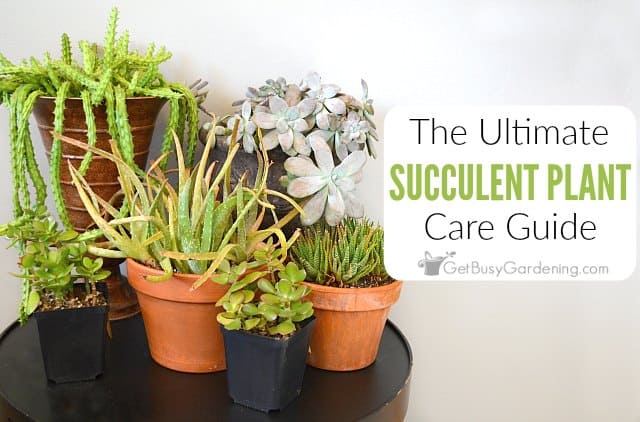
People often ask me what my favorite type of plant is. You just have to take one look at my houseplant collection (and even my garden outside), and you’ll see that the answer is quite obvious. I love succulents the most!
Some people think that succulents are difficult to care for. But the truth is that they are extremely easy, and fairly low maintenance.
I’ve been growing them for decades, and I’m so excited to share with you all of my knowledge about maintaining these gorgeous and fun plants.
In this comprehensive guide, I’ll give you tons of tips on how to grow succulents. Including all you need to know about water, light, fertilizer, soil, pruning, pest control, and much more!
What Is A Succulent?
A succulent is a type of plant that has plump, firm leaves and stems which are designed to retain water. They are native to arid climates that don’t get much rain.
Since they are good at storing water, they don’t need as much moisture as other types of plants. This means they require less maintenance from us.
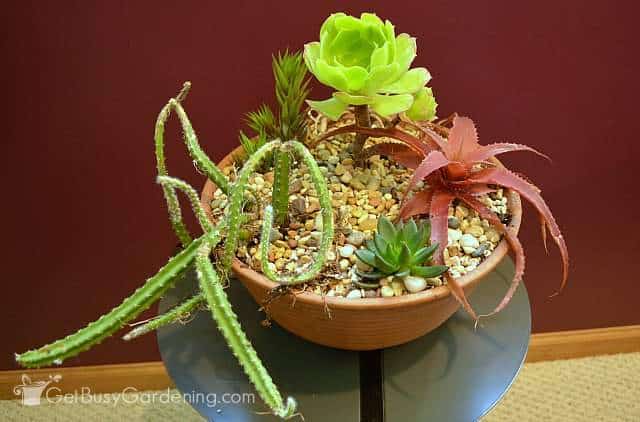
Different Types Of Succulents
There are so many different types of succulents that it’s impossible to name them all in one article. But some are much more common than others. Here are a few of my favorites.
- African milk tree
- Agave
- Aloe vera
- Ghost plant
- Mother of millions
- Burro’s tail
- String of pearls
- Aeonium
- Echeveria
- Pencil cactus
- Jade plant
- Gasteria
- Haworthia
- Kalanchoe
- Starfish cactus (Carrion plant)
- Gastrolia
- Huernia (Dragon flower)
- Holiday cacti

Flowers
Most succulent plants will flower at some point in their life, and several will even bloom constantly with the right care.
Unfortunately, a few of them will die after they flower, which is a normal part of their life cycle. But many others can continue to blossom again year after year.
The bloom times, colors, shapes, fragrance (or lack of), and sizes vary wildly depending on the genus and species.
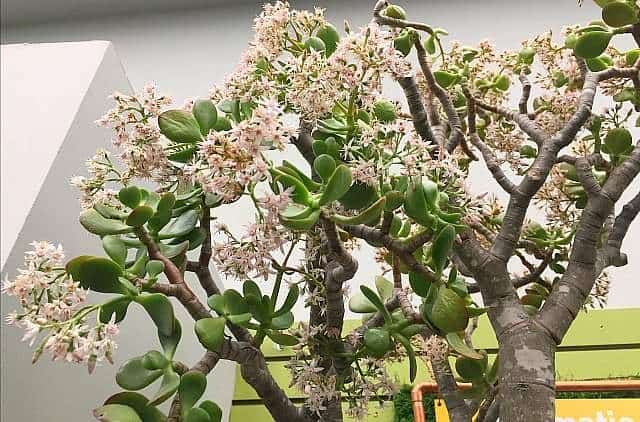
Toxicity
I often get asked if succulents are toxic to cats and dogs. Unfortunately some of them can be poisonous, while others are completely non-toxic.
So, if you’re concerned about their safety, then I recommend researching the specific variety that you have. The ASPCA website has a good list to start with.
How To Grow Succulents
Before I get into the specific details of succulent care, let’s talk about where to grow them. Understanding their hardiness, and placing them in the right location are the first steps for success.
Hardiness
You might be surprised to learn that most succulents are fairly cold hardy. Their native habitat is the desert, which can get pretty chilly at night, even below freezing at times.
But the exact hardiness depends on the species. I have some that can survive several months of sub-zero temps in my zone 4 MN garden. While others would quickly die at the first sign of frost, and must be kept indoors during the winter.
Where To Grow Succulents
No matter if you want to grow them indoors or outside, it’s very important to keep succulents in a dry location where they will get bright light.
They do equally well in pots as they do in the ground, as long as these conditions are met. Choose a container with holes in the bottom, or a garden area that doesn’t get much rain.
Related Post: How To Plant Succulents Indoors Or Outside
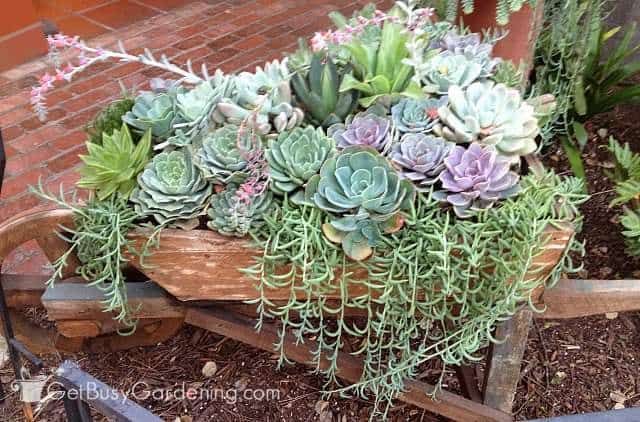
Succulent Plant Care & Growing Guide
Growing succulents can be tough if you’re not familiar with their care requirements. So below I’m going to give you all the details you need in order to be successful.
Light
In general, most succulents grow best with bright light. Some will thrive in full sun, while others prefer a partial shade exposure.
Indoors, place them in or near a sunny window during the fall and winter, and give them filtered light during the hot summer months.
If you see them getting leggy or reaching for the window, that means they need more light. Move them to a sunnier spot, or use a grow light.
Before moving or planting them outside, it’s a good idea to look up their ideal exposure. That way you can prevent issues like sunburn on the ones that prefer to be protected from the intense afternoon rays.
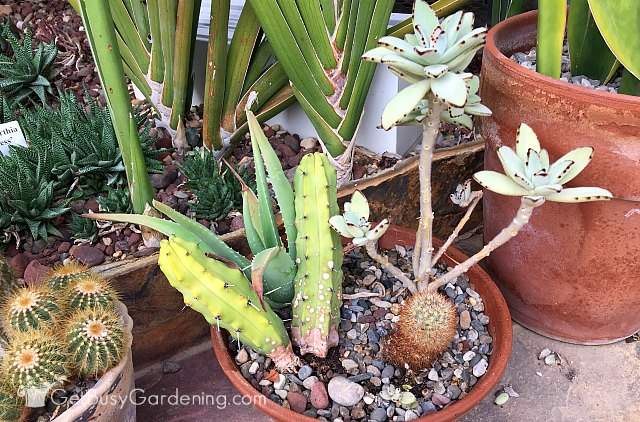
Water
Proper watering is by far the hardest part of successful succulent plant care for most people. And guess what, overwatering is their #1 killer.
They hate wet feet, and consistent overwatering will cause them to rot and die. So always, always check to make sure they actually need it first.
The soil should be completely dry before add more. To check it, stick your finger at least 2″ deep. If it feels wet at all, then wait longer.
This is one the most important things to get right. So if you struggle with it, I highly recommend buying an inexpensive moisture gauge to make it super easy for you. Learn exactly how and when to water them here.
Best Containers
When it comes to growing succulents in pots, it’s important to choose the right container. First off, adequate drainage is a must, especially if you plan to put them outside.
They won’t tolerate soggy soil for very long, and choosing a pot that doesn’t have drainage holes is a recipe for disaster.
In my opinion, terracotta pots are the best choice. The clay helps to wick away the moisture faster, which means that overwatering will be less of a risk.
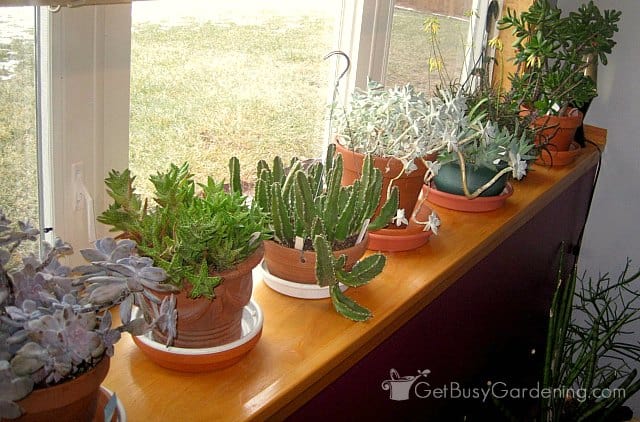
Soil
One of the most common succulent plant care questions I get is regarding what type of soil to use.
Since they like it dry, it’s best to use a fast draining, sandy mix that doesn’t hold onto moisture. You can buy a commercial one for them, or get a gritty mix if you prefer.
I like to make my own using a combo of perlite or pumice, coarse sand, and regular potting soil, so I can get the perfect consistency. Learn how to make your own DIY succulent soil here.
Repotting
Because they tend to have shallow roots, succulents can grow in the same pot for a long time. That means you won’t have to worry about repotting them very often.
You’ll know it’s time if you see roots coming out of the bottom holes, the plant is top heavy and keeps falling over, or their growth has slowed dramatically.
Use a clean container that has adequate drainage, and is only one size larger than the current one. Then bury them at the same depth as they were before. Learn exactly how to repot them here.
Fertilizer
Succulents will benefit from being fertilized during their active growing period. You can buy special liquid plant food that’s made specifically for them.
A general purpose fertilizer or compost tea also work great. You could even top-dress them with slow-release granules if you prefer.
Only feed them during the spring and summer. Start by giving them a weak dose of liquid fertilizer in early spring, gradually increasing it to full strength. Then continue feeding them regularly until fall.
Don’t fertilize them during the colder fall and winter months, or the new growth will likely be very weak and leggy.
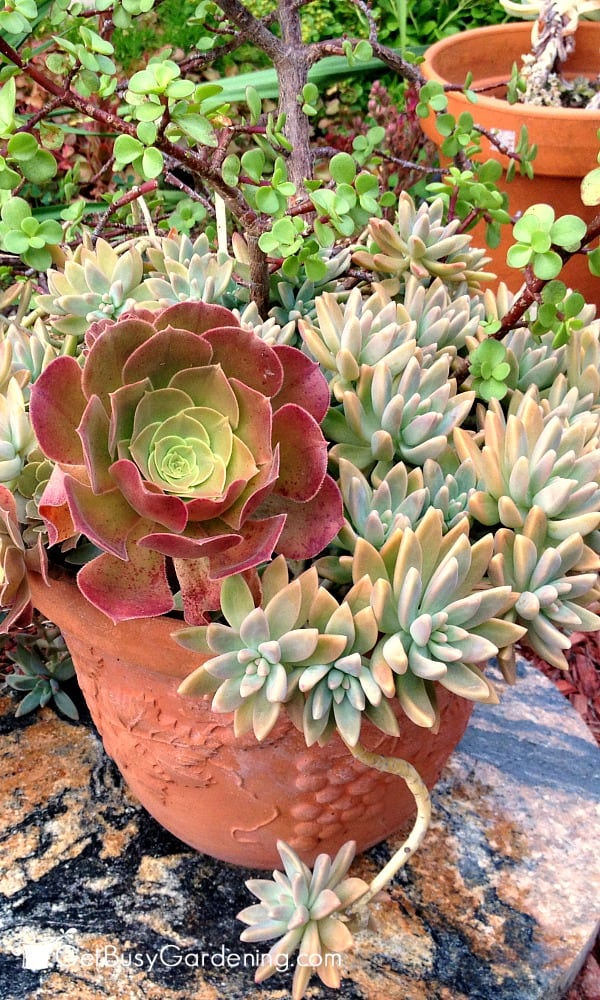
Pest Control
Once you learn how to properly care for succulents, you’ll find they don’t have many issues with pests. But sometimes aphids, mealy bugs, or scale can become a problem.
Be careful what you use to treat them though, some varieties are very sensitive to any type of spray. So test it on a few leaves first, then wait a couple days to make sure there’s no damage before treating the whole plant.
If it’s tolerant, then I recommend using either neem oil, an organic insecticidal soap, or removing the bugs with a cotton swab soaked with rubbing alcohol.
Or you can try making your own spray using a mixture of 1 tsp mild liquid soap per 1 liter of water.
Learn more about How To Get Rid Of Houseplant Bugs Naturally
Pruning
Some succulents need to be pruned regularly in order to maintain their shape and size, while others may not require it at all.
If yours is getting leggy or sparse, then you can trim or pinch it to keep the compact shape. Cut off weak and leggy growth by pinching it with your fingers, snipping it off with a sharp pair of clippers, or use heavy duty shears for thicker stems.
Dead flowers and spikes can be removed at any time. But if you’re pruning for shape, then the best time to do that is in the spring or summer.
Related Post: How To Make An Indoor Succulent Garden
Winter Succulent Care Tips
Believe it or not, succulents go into a state of dormancy during the winter months. They won’t drop their leaves like other plants can, but their growth will slow down, and they won’t need as much moisture.
So allow them to stay dry longer, and water very sparingly. Also, don’t repot, prune, or feed them during the coldest months of the year, just let them rest.
Related Post: How To Make Your Own Gritty Mix Potting Soil
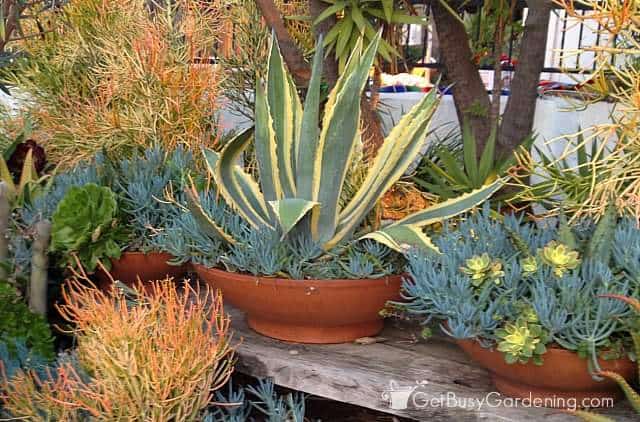
Succulent Propagation Tips
For the most part, succulents are notoriously simple to propagate. Many can be rooted from leaf or stem cuttings, while others need to be divided.
To increase your chances of success, and speed things, dust the cut end with rooting hormone. Learn exactly how to propagate the leaves or stem cuttings here.
Troubleshooting Common Succulent Care Problems
When you get the hang of caring for succulents, you’ll see that they don’t have many problems. But below are some of the most common issues you might run into, along with tips for how to fix them.
Leggy Succulents
The most common cause of leggy succulents is inadequate light, and this is usually more of a problem when you grow them indoors.
If this is happening to yours, give it more sun, or add a grow light indoors. You can prune off the leggy stems once they start to recover.
Brown Leaves
Brown leaves are usually caused by either sun scorch or under watering. If they have brown spots, then it’s most likely sunburn, so move to a partial shade location.
Whole leaves that are brown and dried means they aren’t getting enough moisture. Avoid letting them get bone dry for long periods of time.
Shriveled Leaves
Succulent leaves will begin to shrivel as their internal water supply starts running low. It’s usually not a huge concern, and they will plump back up after you give them a drink.
However, if the soil is moist, and the leaves continue to shrivel, that is a sign of root or stem rot. Check the base of the main stem or trunk for firmness. If it’s mushy, then you’ll need to take cuttings in order to save the plant.
Related Post: How To Propagate Succulents In Winter
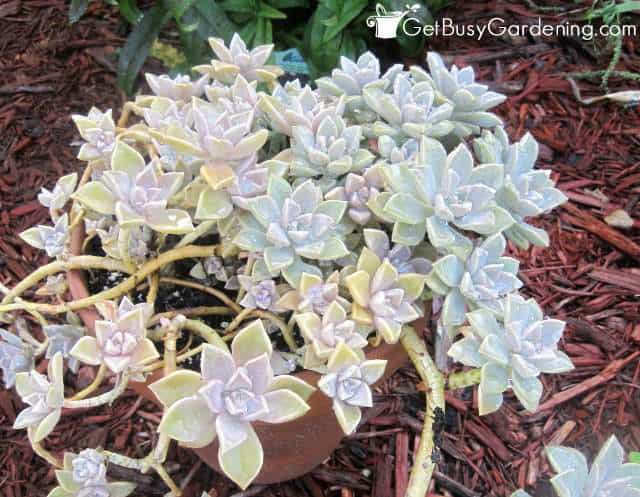
FAQs About Succulent Plant Care
In this section, I’ll answer some of the most frequently asked questions about succulent care. If you can’t find your answer here, ask it in the comments below.
Do succulents need direct sunlight?
While many types of succulents need direct sunlight, there are some that grow better in lower light conditions. It’s best to look up the specific variety you have to determine exactly how much sunlight it needs.
Why is my succulent dying?
Your succulent may be dying due to overwatering, as this is the most common cause of death. Too much moisture will cause them to rot.
Are succulents easy to take care of?
Yes, succulents are easy to take care of, and they thrive on neglect.
Do succulents grow better inside or outside?
In my experience, succulents grow better outside than they do inside. That being said, there are several types that make good houseplants, and can live for decades indoors without any problems.
How fast do succulents grow?
How fast succulents grow totally depends on the variety you have, as well as the care you give it. Some are much faster than others. But in ideal conditions, most of them are very fast.
Succulents are simple to grow, and fun to collect. Once you get the hang of how to care for them, you’ll have no problem keeping them thriving for many years, both indoors and outside.
If you want to learn all there is to know about maintaining healthy indoor plants, then you need my Houseplant Care eBook. It will show you everything you need to know about how to keep every plant in your home thriving. Download your copy now!
More Plant Care Guides
- Palm Plant Indoor Care Guide
- Tropical Houseplant Care Guide
- Growing Plants Indoors – The Ultimate Guide
- How To Care For Cactus Plants
Share your succulent plant care tips in the comments section below.
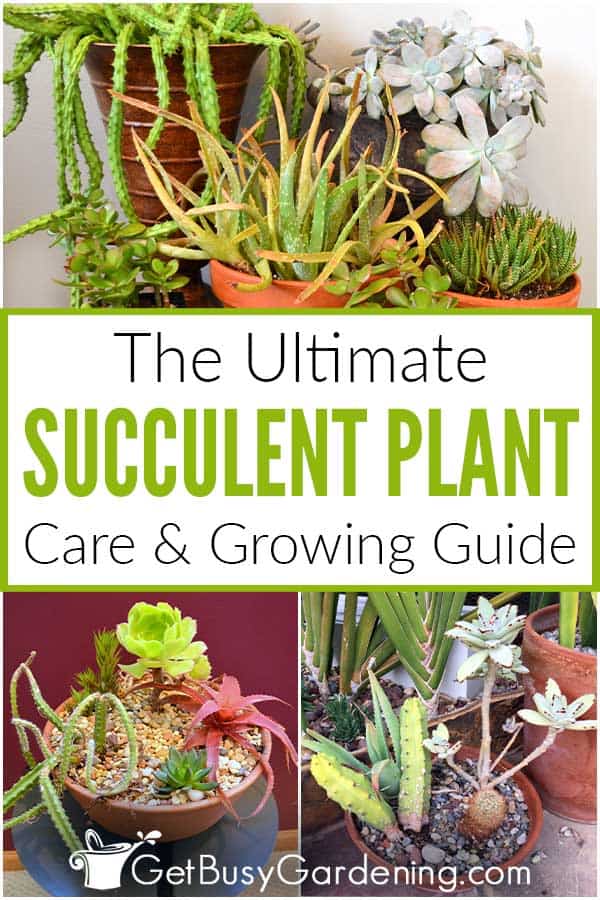
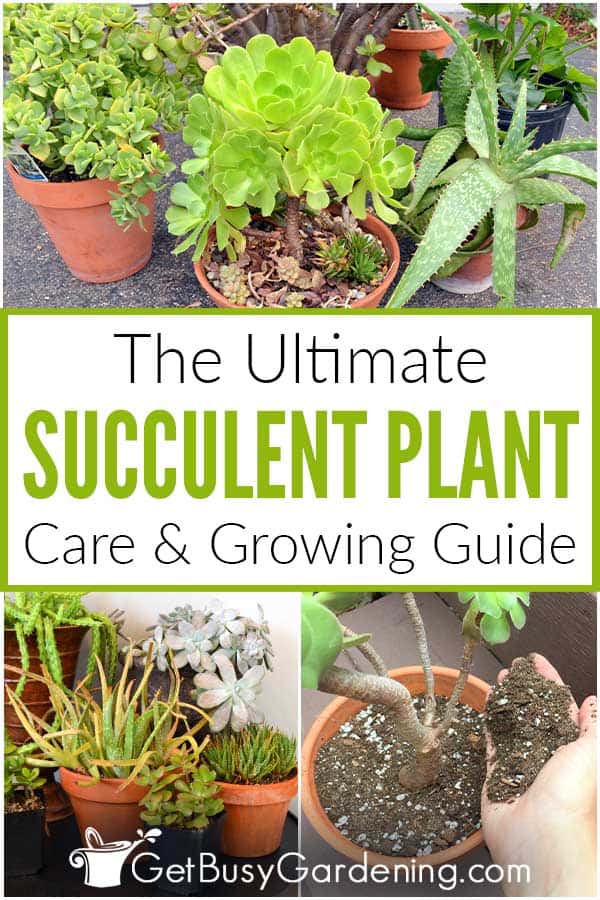
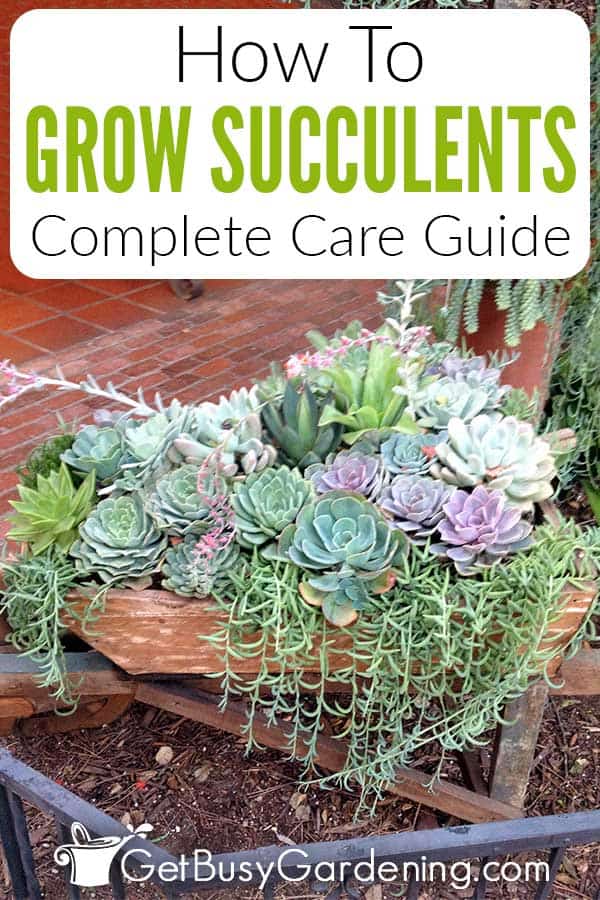
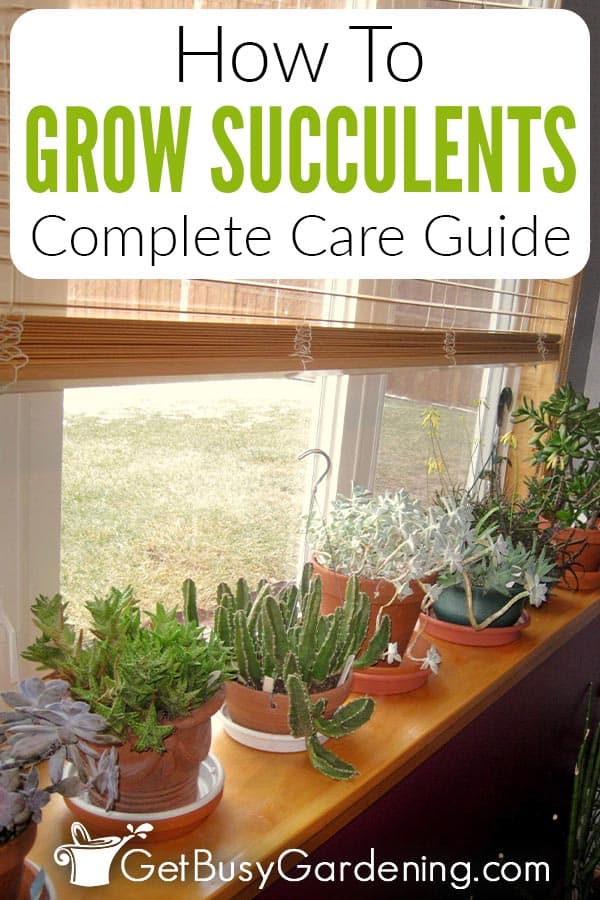
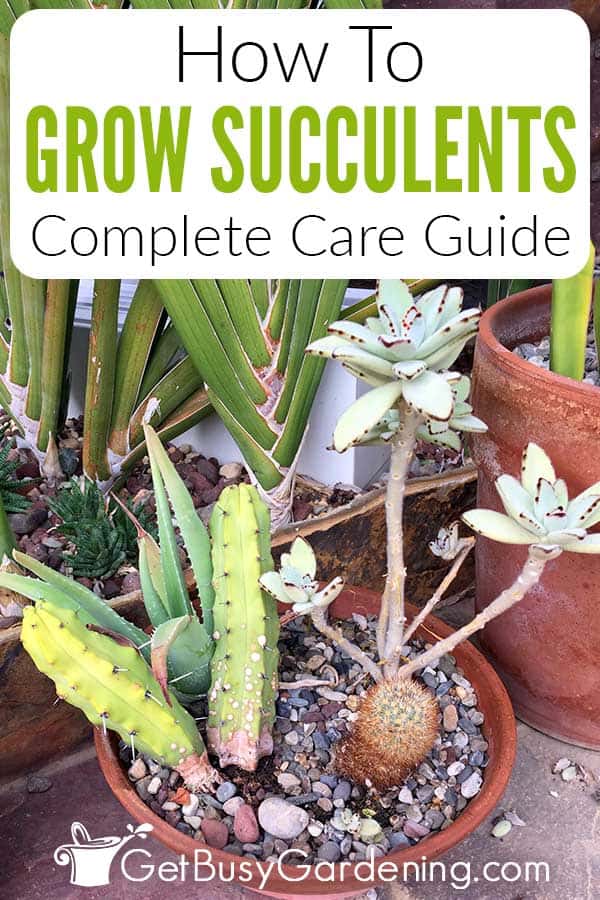


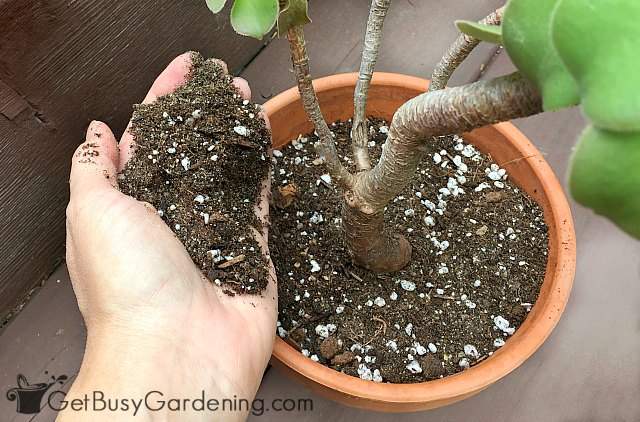


gladys ciskowski says
I do inside plants. Tell me how they know when is summer or winter
Amy Andrychowicz says
Even though they are indoors, plants can still sense the change of season for sure. The main thing is lower light levels, but they can also tell by the temperature shifts.
Ronnie says
Hi,
I just started propagating snake plants and I just want to know if your succulent soil recipe is good for snake plants. Thank you.
Amy Andrychowicz says
Yes, it would work great for them. They like similar soil as succulents do. However, if you tend to underwater, you may want to add less sand and perlite. Snake plants do like a little bit more moisture retention if they don’t get watered very often.
Ronnie says
I will try your recipe. Thank you.
Amy Andrychowicz says
You’re welcome!
Kira says
Thank you Amy!! This was super, super helpful. I’m a beginner and this gave me a lot of guidance.
Amy Andrychowicz says
You’re welcome! Good luck growing your succulents! 🙂
Rowena Pastones says
I’m just a beginner! Looking for ways to take care of few succulents I have.
Amy Andrychowicz says
Great, you found the right article for learning all about caring for succulents! 🙂
Jess m. says
Hi Amy!
Loved the article! Super helpful! Just wondering though…I got 2 tiny succulents and 1 tiny cactus from Walmart a little over a month ago. I keep them on a sunny windowsill and I’ve only watered them 3 times so far, I waited till I felt the soil was dry, and they still look the same size as when I got them. I wanted to repot all 3 together into a medium sized pot. Should I wait until they are bigger to repot them? Also, the succulents look a little dry on the outer leaves..should I wait until they are better to repot them? Thanks again for all the great articles! Love ur site!
??
Amy Andrychowicz says
Glad that you found this article helpful, that’s always great to hear. 🙂 Succulent and cactus plants go into a state of dormancy during the winter, and most of the time they will barely grow. Spring and summer are their active growing season, so I would expect you’ll start to see new growth soon. You can combine the succulents into the same pot, but I would keep the cactus separate. Succulents do need a bit more water than cactus plants, so it’s best to keep them in different pots. Now is the perfect time for repotting, so go for it. Just don’t go too large on the pot size, because that can lead to overwatering.
Ruma says
Your article has been very helpful. I lost many valuable succulents reason is not overwatering. Again I love to grow them by reading your article. I live in such a place where humidity and temperature is very high. Should I plant succulents
Amy Andrychowicz says
You’re welcome, glad you found the article helpful! It’s difficult to grow succulents in tropical areas because they will only rot from all the moisture and humidity. They grow best in arid climates. Your best bet would be to try growing them indoors so that you can control the humidity and moisture level. Good luck!
Toni says
When do you know it’s time to report succulents and cactus? Thanks
Amy Andrychowicz says
Most succulents and cactus plants have very shallow roots and can grow in the pot for many years. You’ll know it’s time to repot them if you see roots growing out of the bottom of the pot, or at the top of the soil. That means they’re pot-bound and need to be moved into a larger pot.
Colleen Scatena says
I have always loved succulents, so I have decided to start growing them. Your article has been very helpful. I saw a few succulents that are so beautiful I would love to grow them. They are called blue African succulent and blue stone flower. Do you know much about these. Are they easy to grow. Thanks for all your great tips.
Amy Andrychowicz says
Great, so glad you found the post helpful! I’ve never heard of either of those plants, but I looked them up. It looks like the blue African succulent is a type of aeonium. While I’ve never grown that specific variety, I have grown lots of aeoniums and they require the same type of care as I’ve outlined in this succulent care guide. I couldn’t find anything conclusive when I searched for the blue stone flower, so I’m not sure what that one is.
Amelia says
Hi there!
I am trying to id my succulent plant. It looks exactly like the drooping green plant in the second image posted on this page. Can you tell me what it is so I can know how to treat it?
Thanks!
Amy Andrychowicz says
Yes, that one is called “string of bananas” (latin name is Senecio radicans). Follow the succulent plant care instructions in this post to keep it thriving. 🙂
The Bearded Hiker says
I too love succulents, and have also killed my fair share. But they are just so beautiful I can’t stay away.
I have a question for you, I hope you can help me out. Do you have a good method for moving/replanting a donkey tail succulent plant without it breaking apart? The little nubbins, they’re so fragile, but I really need to get it in another hanging pot.
Amy Andrychowicz says
No, I’m afraid I haven’t found any special trick to it. But the silver lining is that burro’s tail succulents are super easy to propagate so you can grow new plants with all of those tiny pieces that break off. 🙂
Amy - Get Busy Gardening says
@PlantPostings – Thanks, glad you enjoyed the succulent care post. I have my succulent plants all over the house. I am lucky to have tons of south facing windows, and bright rooms to keep them in. My cat eats some of my plants too, those I keep in my bathroom that has a window. That door stays shut to keep the plant eater (aka Oscar) out. :-)@Grace – Thanks! I'm happy that I've inspired you!
GRACE PETERSON says
Wow. I LOVE your succulent dish gardens. You inspire me. Maybe I'll give them a go sometimes.
PlantPostings says
These are great tips on caring for succulents, Amy! Do you have a special room or spot for your plants? I wish my cats weren't so naughty. I'd have a lot more plants. Maybe I need to build an unreachable shelf. 😉
RIRN says
Sorry to say, Plant Postings, but I don’t believe there is such a thing as an unreachable shelf. I’ve lost three good-sized, lovely jade plants to three different cats in my lifetime. No shelf was high enough. You may have to choose between cats and plants. Personally, I went with the cats. Good luck, RIRN#1
Amy Andrychowicz says
Haha, that’s very true! Sorry to hear about your poor jade plants. My cats don’t bother mine at all, luckily.